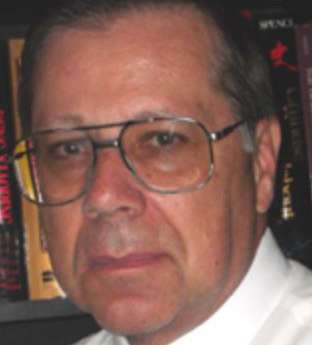
By JOHN RICHARD SCHROCK
The command that teachers post their class content online is unprofessional.
I apologized to my students as they settled into their seats. It was March 14, 2011, and the Fukushima offshore earthquake had struck the Sunday before. But it took until Monday night for the damage to occur with the backup power units at their nuclear plant and begin the disaster. So when my students took their seats, my apology was for their having read the regular lesson assigned in the syllabus. Instead we would be learning about how nuclear radiation damages the body. It was biology—unplanned biology.
From that moment, every eye was intently focused on the topic. The first few minutes was footage drawn from the broadcast news, showing massive tidal waves coming into the port and rapidly overflowing the floodwall and washing down the coastal city streets.
It also shut down the power backup units that kept the nuclear plant cool. The remainder of the class was a straightforward explanation of alpha, beta and gamma particles and their variations in penetration. Every student was focused on understanding how isotopes varied and differences in half-life of iodine131 (8 days), cesium137 (30+ years) and strontium90 (28.8 years). They saw the differences between old reactors such as the open Chernobyl facility and today’s modern sealed reactors. They learned the low level of uranium enrichment in reactors and the much higher enrichment required for nuclear bombs.
Most important was their realization that we receive low levels of radiation every day from our natural environment and that our cells have a natural process that repairs the DNA damage from this normal radiation.
This was knowledge that students took with them from the classroom and shared later in the day with classmates and family, all of whom were watching this event unfold on television each night. They shared their new understanding with others. And that also reinforced these lessons in their minds. I always give a quiz at the end of the next day’s class—they all scored perfect!
In teaching, we call this “seizing the moment.” Indeed, it would be unprofessional to stick to a regular textbook topic when your students’ minds are all elsewhere. That occurs when we were caught up in the 9/11 attack or other events where the high emotions of the day focus our attention elsewhere.
But uniqueness also involves different collections of students taking the same classes. While teaching the “same” high school introductory biology at Hong Kong International School to five classes throughout the day, the syllabus again was the same. My classes started out the same. But these classes became different because each set of students brought different experiences with them. As I explained one concept, I could read students’ eyes and see that some understood and some did not. That is when you stop briefly and ask the one who understands to explain an example in his or her own words.
That student re-explanation usually relates to the classmate who didn’t understand, and that face lights up. And then questions arise from their different sets of experiences. We pursue a discussion of other related examples, or how the concept was discovered, or how it affects everyday life. We eventually get back on track. Yes, my five biology classes were the same on paper. But I taught five different classes because of the five different mixes of student experiences in each class.
When I taught in rural Kentucky, I used farm experiences to describe many concepts. But those descriptions did not work when I taught in Terre Haute where few if any students cared for and understood farm animals. The syllabus or lesson topics were the same. The teaching must be different.
This brief description illustrates how teaching is a profession. And only the teacher makes these professional decisions. Just as a patient or hospital administrator does not tell the surgeon how to operate, parents and school administrators have no business telling the professional teacher how to teach. We are obligated to stay within our academic field. And our academic profession has a body of professional knowledge. There is no “flat earth” in geology classes. And 2 + 2 does not equal 5 in math class.
Standardized education has harmed American students ever since 2001 when one-size-fits-all state assessments were imposed. Memorization scores went up. Scores on aptitude and creativity nose-dived.
We must let professional teachers teach unique students in unique ways.
. . .
John Richard Schrock has trained biology teachers for more than 30 years in Kansas. He also has lectured at 27 universities during 20 trips to China. He holds the distinction of “Faculty Emeritus” at Emporia State University.





